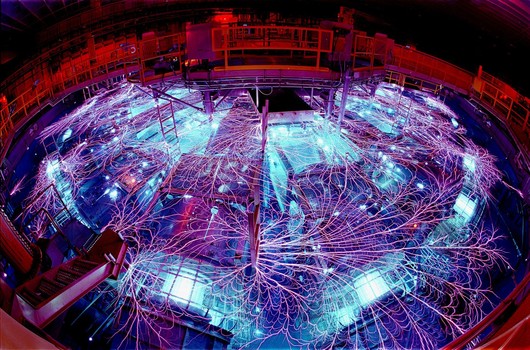The Earth’s iron core was formed by iron rain that fell on the liquid mantle when the Earth was first forming. These are the conclusions from studies concerning the true nature of the vaporization of iron using the Sandia National Laboratories Z-machine, the world’s most powerful radiation source. The discovery that iron rain formed the Earth’s core and not molten iron from collisions was reported in the edition of the journal Nature Geoscience.
Scientists from Lawrence Livermore National Laboratory, Sandia National Laboratory, Harvard University and the University of California at Davis used the Sandia National Laboratories Z-machine to replicate conditions that existed when the Earth was first formed. The researchers found that the minimum pressure needed to vaporize iron is much lower than previously thought. The lower energy needed to vaporize iron resulted in an iron rain created on the Earth’s surface that penetrated the molten layers of the Earth. The heavier iron particles eventually collected at the center of the Earth forming the molten iron core that exists today.
Previously theory considered that iron objects from Earth and space collided with each other producing sufficient energy to produce molten iron that sunk through the layers of Earth’s strata to form the Earth’s core. Vaporized iron has a better chance of spreading across the Earth uniformly. The new discovery of the lower pressure needed to vaporize iron explains why the Earth’s Moon does not have an iron core. The lower gravity of the Moon prevented iron vapor created at the same time the Earth’s core formed from penetrating to the center of the Moon.















